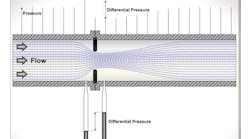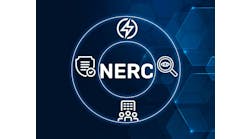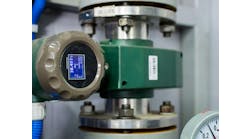Temperature is the most important common measurement. Temperature determines product formation rate and yield in reaction and crystallization processes and product composition in separation processes. Temperature is also important for monitoring energy balances and heat transfer coefficients. The principal considerations are the selection of a TC or RTD and the best thermowell assembly design, installation, and location for the application.
Integral (head) mounted wireless transmitters on thermowells offer the portability to demonstrate optimum sensor locations and online analysis of heat transfer coefficients and inferential measurement of heat transfer rate to optimize reaction rates and process efficiency as noted in the ISA-AW-2011-Wireless-Measurement-and-Control-Presentation.pdf. Portable transmitters can be used to find the best tray for column temperature control (e.g. tray with largest and most symmetrical temperature change for a change in reflux to feed ratio). For more info on the importance of temperature for controlling processes see the March 28, 2012 blog “How can you Quickly Increase Production Rate and Efficiency? (Part 2)" and the April 5, 2012 blog “How can you Quickly Increase Production Rate and Efficiency? (Part 3)".
The following checklist is not intended to cover all the specification requirements but some of the major application details to be addressed for resistance temperature detectors (RTD) and thermocouples (TC). The following list assumes the materials of construction have been properly specified, the sensor will work safely and reliably with acceptable accuracy for the maximum possible temperature, and the electrical connections and the enclosure will meet electrical area classifications and codes. For more info see Chapters 1-2 in the ISA book Advanced Temperature Measurement and Control - 2nd Edition Reliability and precision (noise, repeatability, resolution, and threshold sensitivity) are most important.
- Is the distance from the equipment outlet (e.g. heat exchanger exit) and sensor at least 25 pipe diameters for a single phase to promote mixing (recombination of outlet streams)
- Is the transportation delay (distance/velocity) from the equipment outlet (e.g. heat exchanger exit) to the sensor less than 3 seconds?
- Does the distance from the desuperheater outlet to the first elbow provide a residence time (distance/velocity) that is greater than 0.1 sec?
- Does the distance from the desuperheater outlet to the sensor provide a residence time (distance/velocity) that is greater than 0.2 sec?
- Is a RTD used for temperatures below 400 degC to improve threshold sensitivity, drift, and repeatability by more than a factor of ten compared to TC if vibration is not excessive?
- For RTDs operating at temperatures above 400 degC, is length minimized and sheath diameter maximized to reduce error from insulation deterioration?
- For RTDs operating at temperatures above 600 degC, is sensing element hermitically sealed and dehydrated to prevent increase in platinum resistance from oxygen and hydrogen dissociation?
- For TCs above 600 degC is decalibration error from changes in composition of TC minimized by choice of sheath and TC type?
- For TCs above 900 degC is sheath material compatible with TC type?
- For TCs above the temperature limit of sheaths, is the ceramic material with best conductivity and design used to minimize measurement lag time?
- For TCs above the temperature limit of sheaths with gaseous contaminants or reducing conditions, is primary (outer) and secondary (inner) protection tubes designed to prevent contamination of TC element and still provide a reasonably fast response
- In furnaces and kilns does location and design minimize radiation and velocity errors?
- Is the immersion length long enough to minimize heat conduction error (e.g. L/D > 5)?
- Is the immersion length short enough to prevent vibration failure (e.g. L/D < 20)?
- Is the velocity fast enough to minimize coatings (e.g. > 5 fps)
- Is the velocity fast enough to provide a fast response (e.g. > 0.5 fps)
- For pipes, is the tip near the centerline?
- For vessels, does the tip extend sufficiently past the baffles (e.g. L/D > 5)?
- For columns, does the tip extend sufficiently into tray or packing (e.g. L/D > 5)?
- For TC, is it more important to minimize noise by using ungrounded junction or to minimize sensor element lag time by grounded junction?
- To increase RTD reliability, are dual RTD elements used except when vibration failure is more likely due to smaller gauge?
- To increase TC reliability, does the sensor have dual isolated junctions?
- For maximum reliability, are 3 separate thermowells with middle signal selection used?
- Does the sensor fit tightly in thermowell to minimize measurement lag from air gap acting as insulator (e.g. annular clearance < 0.01 inch)?
- Is an oil fill used that will not form tars or sludge at high temperature in thermowell (with tip pointed down to keep fill in tip) to minimize measurement lag?
- Is premium TC extension wire used to minimize measurement uncertainty?
- Is 4 wire RTD lead wire used to minimize measurement uncertainty?
- Are integral mounted temperature transmitters used for accessible locations to eliminate extension wire and lead wire errors and reduce noise?
- Are wireless integral mounted transmitters used to provide portability of measurement for process control improvement and to reduce wiring installation and maintenance costs?
- Are proper linearization tables used in the transmitter and calibrator?

Leaders relevant to this article:


